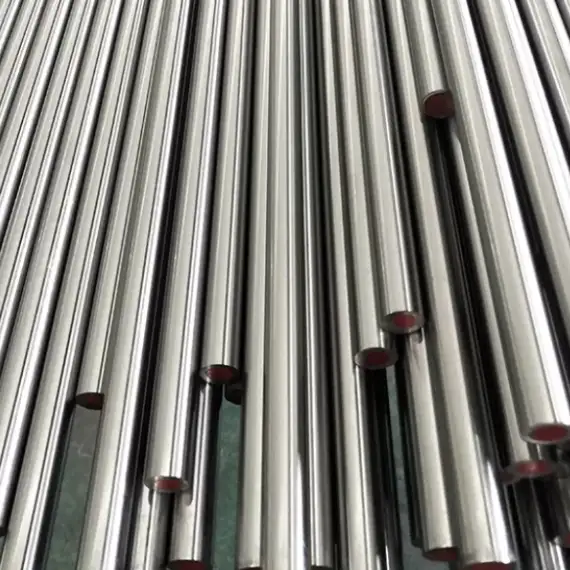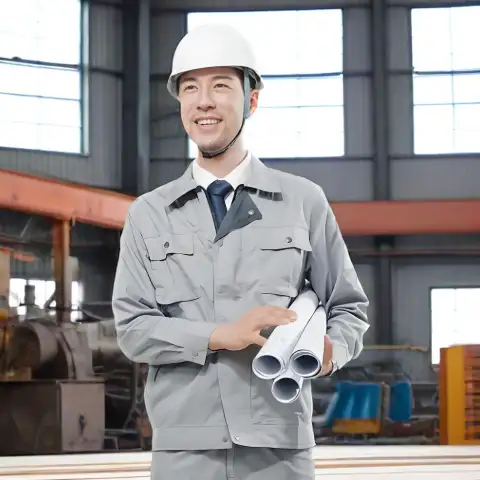As of mid-2025 the market for 904L is trading roughly USD 6.5–10.5 per kg for merchant forms (depending on part form, finish and country of origin) — equivalent to roughly USD 6,500–10,500 per tonne; plate and heavy bar at the high end, some welded tubes and commodity lengths toward the low end of the band. These ranges reflect mill/merchant spreads, country premiums, and short-term nickel/molybdenum index moves.
What is 904L stainless steel?
904L (UNS N08904, Werkstoff 1.4539) is a super-austenitic stainless steel engineered for elevated corrosion resistance in chloride and reducing-acid environments. Its approximate chemistry (typical ranges) includes high nickel (~23–28%), chromium (~19–23%), molybdenum (~4–5%), and copper (~1–2%) which together deliver excellent resistance to pitting, crevice corrosion and sulphuric acid attack when compared to common austenitics such as 304/316. This alloy is selected where resistance to warm seawater, chlorides, and reducing acids is required.
Physical properties commonly used for weight and engineering calculations: density ≈ 7,900–8,050 kg/m³ (commonly listed as ~7.95–8.05 g/cm³), Young’s modulus ≈ 190–195 GPa, and good toughness at low temperatures. Use the density value below when computing theoretical weights.
Typical applications where 904L is specified
-
Chemical and petrochemical equipment handling sulphuric and phosphoric acids.
-
Heat exchangers, evaporators and condensers in harsh process streams.
-
Offshore piping and components exposed to warm seawater and chloride contamination.
-
Pharmaceutical and food equipment where corrosion resistance and purity matter.
-
Flanges, fittings and pressure components where superior pitting resistance is required over 316L/317L.
Price snapshot (forms & unit pricing, mid-2025)
Market prices depend heavily on: form (plate vs bar vs seamless pipe), finish and certification, country of origin, order quantity, and current LME nickel/molybdenum values. Representative mid-2025 ranges (merchant/FOB basis, indicative only):
-
Plate (heavy, cut-to-size): USD 7.5–10.5 / kg (higher for thicker heavy plate, heavy mill tests).
-
Round/flat bar (industrial grades): USD 6.5–9.5 / kg (OEM bundles, long lengths may be cheaper).
-
Seamless/welded pipe & tube: USD 6.5–10.0 / kg depending on OD, wall, seamless vs welded, and finish.
NOTE: Some online listings from merchant marketplaces may show unusually low per-kg tags for small lots or mixed grades; always verify mill certificates (e.g., EN10204/3.1 or 3.2) before transacting.

Five-year price history (2021–2025)
Below is an aggregated, indicative view of typical merchant FOB ranges for 904L in USD/kg. Because 904L is a high-nickel, high-molybdenum alloy, its price tracks nickel and moly movements and also moves with stainless mill premiums and regional demand.
| Year | Indicative average range (USD/kg) | Notes |
|---|---|---|
| 2021 | 5.5 – 8.0 | Post-pandemic rebound, nickel elevated. |
| 2022 | 6.0 – 9.0 | Supply tightness and freight spike pushed premiums. |
| 2023 | 6.5 – 10.0 | Peak volatility as base metals surged then eased. |
| 2024 | 6.0 – 9.5 | Markets softened; inventories rebuilt in some regions. |
| 2025 (mid-year) | 6.5 – 10.5 | Current band reflects LME nickel adjustments and regional premiums. |
Interpretation: 904L saw its widest spreads in 2022–2023 amid base metal volatility and logistics cost inflation. Since late-2024 there has been a partial normalization but the alloy remains markedly pricier than common austenitics due to its higher Ni/Mo/Cu content. Global stainless trackers (MEPS, MetalMiner) show the wider stainless complex softened in 2024 but remains sensitive to LME nickel moves and demand from chemical/petro sectors.
Standard plate / bar / pipe sizes and weight calculations
Density for calculations
Use density = 7,900–8,050 kg/m³ (commonly quoted 7,900–8,000 kg/m³). For conservative weight estimates use 7,900 kg/m³.
Weight formula (theory)
-
Plate weight (kg) = Length (m) × Width (m) × Thickness (m) × Density (kg/m³)
-
Round bar weight (kg) = π × (D/2)² (m²) × Length (m) × Density
-
Pipe theoretical weight (kg/m) = Cross-sectional metal area (m²) × Density = π × ( (D_o² − D_i²) / 4 ) × Density
Typical commercial plate sizes (examples from mills)
Common mill plates: 2500×1250 mm and 4000×2000 mm in thickness increments (3, 4, 5, 6, 10, 12 mm etc.). Example weights (theoretical): using density = 7,900 kg/m³.
Example plate weight table (theoretical):
| Size (mm) | Thickness (mm) | Area (m²) | Weight (kg) @ 7,900 kg/m³ |
|---|---|---|---|
| 2500×1250 | 5 | 3.125 | 3.125 × 0.005 × 7,900 = 123.4 kg |
| 4000×2000 | 6 | 8.000 | 8.000 × 0.006 × 7,900 = 379.2 kg |
| 4000×2000 | 10 | 8.000 | 8.000 × 0.010 × 7,900 = 632.0 kg |
(These sample weights are theoretical — cut-to-size yields, edge trimming and finish add small variance.)
Example round bar (metric) weight formula:
Weight (kg/m) = (π/4) × D² (m²) × Density (kg/m³). For a 100 mm dia round bar: D = 0.100 m → area = 0.00785 m² → weight/m ≈ 0.00785 × 7,900 = 62.0 kg/m.
Pipe example (theoretical): OD 114.3 mm, wall 6.35 mm → D_o = 0.1143 m, D_i = 0.1143 − 2×0.00635 = 0.1016 m. Metal area ≈ π/4 × (0.1143² − 0.1016²) = 0.00164 m² → weight/m ≈ 0.00164 × 7,900 = 13.0 kg/m. (Use mill tolerance tables for exact invoiced weights.)
904l stainless steel price per kg
The table below synthesizes merchant listings, marketplace quotes and regional price reports (representative ranges, FOB/merchant basis). Use these as negotiation starting points; final quoted prices will vary with certification, heat number traceability, and logistics.
| Region | Plate (USD/kg) | Bar (USD/kg) | Pipe (USD/kg) | Typical regional notes |
|---|---|---|---|---|
| China (FOB) | 6.0 – 8.5 | 6.0 – 9.0 | 6.0 – 8.5 | Chinese mills/merchants often give most competitive factory prices but expect minimum order quantities; Alibaba/China listings show aggressive FOBs for larger lots. |
| United States (merchant) | 8.5 – 12.5 | 7.5 – 11.0 | 8.0 – 12.0 | US priced higher due to domestic mill premiums, inspection and certification costs. |
| Europe (merchant / mill) | 8.0 – 11.0 | 7.0 – 10.5 | 7.5 – 11.0 | EU pricing includes stronger environmental compliance and QA costs; stainless price trackers (MEPS) provide monthly indices. |
Notes: These bands are intentionally wide to reflect reality: small, certified lots cost more; large industrial batches or mill direct purchase can be at the low end. For turnkey projects always get multiple mill/merchant quotes and request up-front material certificates.
Medium-term outlook (next 5 years): trend drivers
Primary drivers that will shape 904L pricing:
-
LME nickel price movements: Nickel is the dominant cost driver for Ni-rich superaustenitics; sustained nickel rallies lift 904L.
-
Molybdenum and copper premiums: Mo and Cu availability/supply disruptions increase alloy premiums.
-
Chemical & oil & gas capex cycles: Demand from chemical processing, petrochemical turnarounds and offshore projects creates periodic spikes.
-
Regional trade policy / duties / anti-dumping actions: Tariffs or AD measures can push buyers toward local supply and raise domestic prices.
-
Inventory levels & merchant destocking/re-stocking: When warehouses rebuild, prices can rise as merchants buy forward; the opposite applies during destocking.
Scenario snapshot:
-
Base case: gradual normalization of stainless spreads with modest growth tied to industrial capex (prices ± 5–12% over 5 years).
-
Bull case: major LME nickel rally or supply shock → 20–40% higher alloy premiums for 904L.
-
Bear case: substitution to duplex/leaner alloys and technological shifts in processes → moderate softening (10–20%) if demand weakens.
Because 904L carries alloy content risk, buyers who can secure longer-term contracts, or hedge via nickel-linked pricing formulas, reduce spot exposure.
how to buy 904L and why MWalloys can help
Key procurement checks before you order: mill test certs (3.1/3.2), traceability to heat number, surface finish, hardness/test reports, straightness and dimensional tolerances, packing for export, and inspection options (third-party at mill). Ask for delivery schedule (weeks), MOQ, and whether the price is inclusive of testing/certification.
Why consider MWalloys (MWAlloys)
MWalloys is an integrated supplier with product capability across 904L plates, bars and tubes. We offer: 100% factory (mill) price advantage, on-stock items for fast turnaround, and factory test documentation for export. Our documented product range includes plates (1–200 mm), pipes OD Ø10–Ø1200 mm, and long lengths cut-to-order. For large orders MWalloys can provide staged shipments and standard EN/ASTM test certificates.
Lead times & logistics (practical rules):
-
From Chinese mill (stock items): 7–21 days for in-stock plate/bar; longer (30–60+ days) when production is required.
-
For custom heavy plate or special tests: expect 4–10 weeks depending on scheduling.
-
Always confirm who pays for inspection, packing and export documentation in the quote.
Surcharges to expect: Cold-rolled or mirror finishes, pickling/passivation, extra NDE (UT, PMI), and packaging for marine shipment typically add per-kg or per-lot fees.
Frequently Asked Questions
-
Is 904L much more expensive than 316L?
Yes. typically materially more due to high Ni and Mo; expect 904L to be several USD/kg above 316L depending on market conditions. -
Can 904L replace duplex stainless in seawater?
In some chloride environments 904L performs well, but duplex grades often offer higher strength and may be more economical; selection depends on chloride, pressure and mechanical requirements. -
What certification should I require?
At minimum EN/ASTM material certificate 3.1; for critical process equipment consider 3.2 or third-party inspection. -
How do traders price 904L vs base metal indexes?
Traders often quote a base price plus a nickel/moly alloy surcharge or follow a nickel-linked formula. Ask sellers for the price formula. -
Are there good Chinese suppliers for 904L?
Yes, there are multiple mills and stockists in China offering factory (FOB) prices; confirm traceability and certificates. MWalloys lists 904L plate, bar and pipe in its product range. -
How to calculate plate weight?
Weight (kg) = L (m) × W (m) × T (m) × Density (≈7,900 kg/m³). See earlier examples. -
Is lead time long for 904L?
Stock items ship quickly (days–weeks); new production or heavy plate requires weeks to months depending on mill queue. -
Can 904L be welded easily?
Yes. weldability is good with proper filler selection and procedures; copper content improves resistance to certain acids but welding procedure qualification is recommended. -
How volatile is 904L pricing?
More volatile than low-alloy stainless because of sensitivity to nickel and moly; expect spot swings during metal shocks. -
Any tested alternatives to reduce cost?
In some cases duplex stainless or high-alloyed 316 variants with higher Mo can be considered; decisions should be made on corrosion modelling and life-cycle cost.
Practical buying checklist
-
Obtain mill certificate (3.1/3.2) and heat number traceability.
-
Confirm exact item form, finish and tolerances.
-
Ask for sample cut or certified sample test reports for mechanical and chemical composition.
-
Include packaging and export docs in contract.
-
Clarify warranties and replacement policy for non-conforming material.
-
Consider multi-quote and request lead time & MOQ upfront.
-
Negotiate nickel-linked pricing clauses if you are buying in volume.
Closing remarks
904L is a specialty stainless alloy chosen for aggressive chemical and chloride environments. Its cost premium is driven by nickel, molybdenum and copper content and by certification/traceability expectations. For procurement, the safest commercial approach is to combine a short list of qualified suppliers (including mills with stock), require full mill-test documentation, and include price formula safeguards for alloy surges. MWalloys supplies 904L plate, bar and pipe from factory stock with mill certificates and competitive factory pricing, and can be considered for projects that need fast, documented deliveries.

